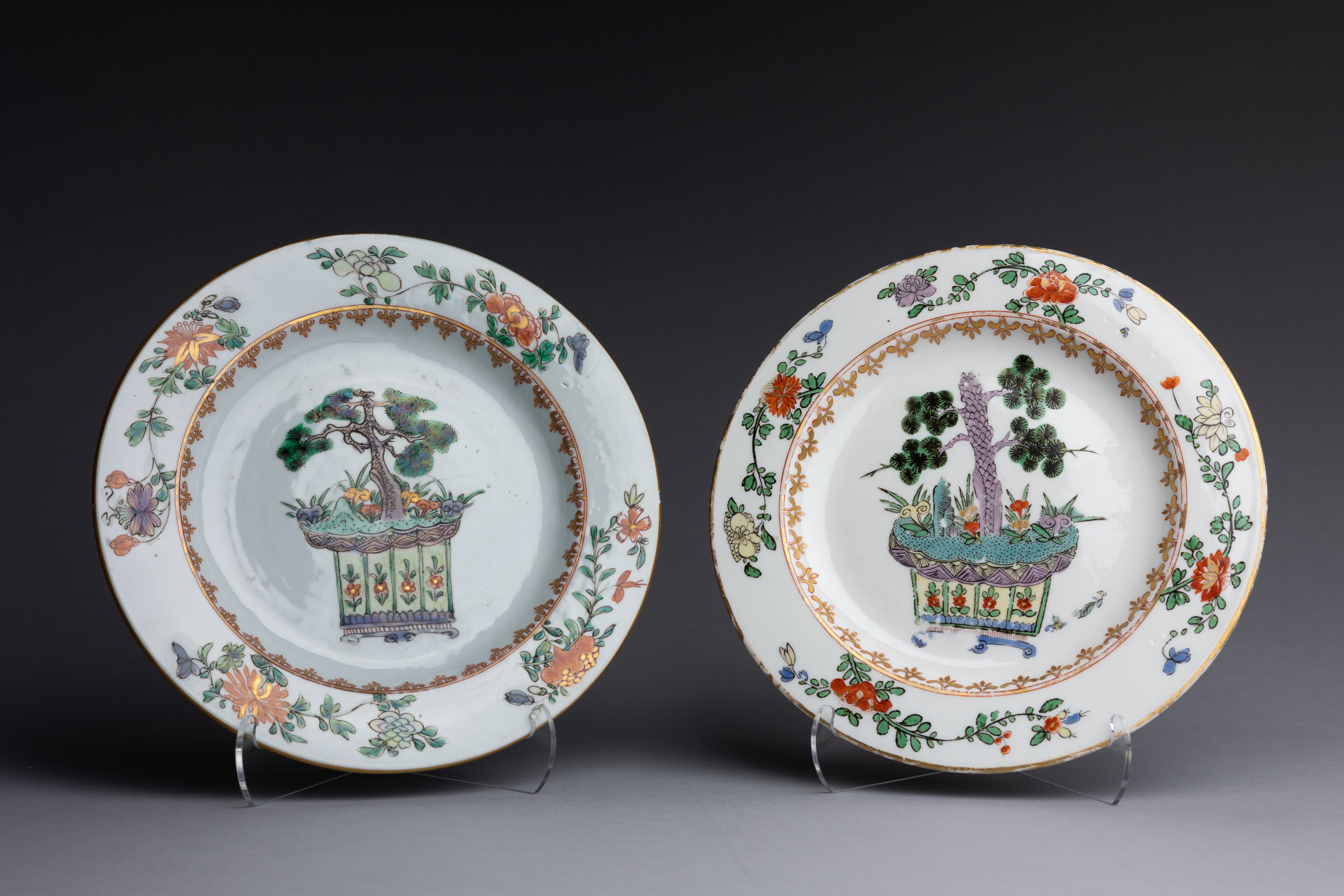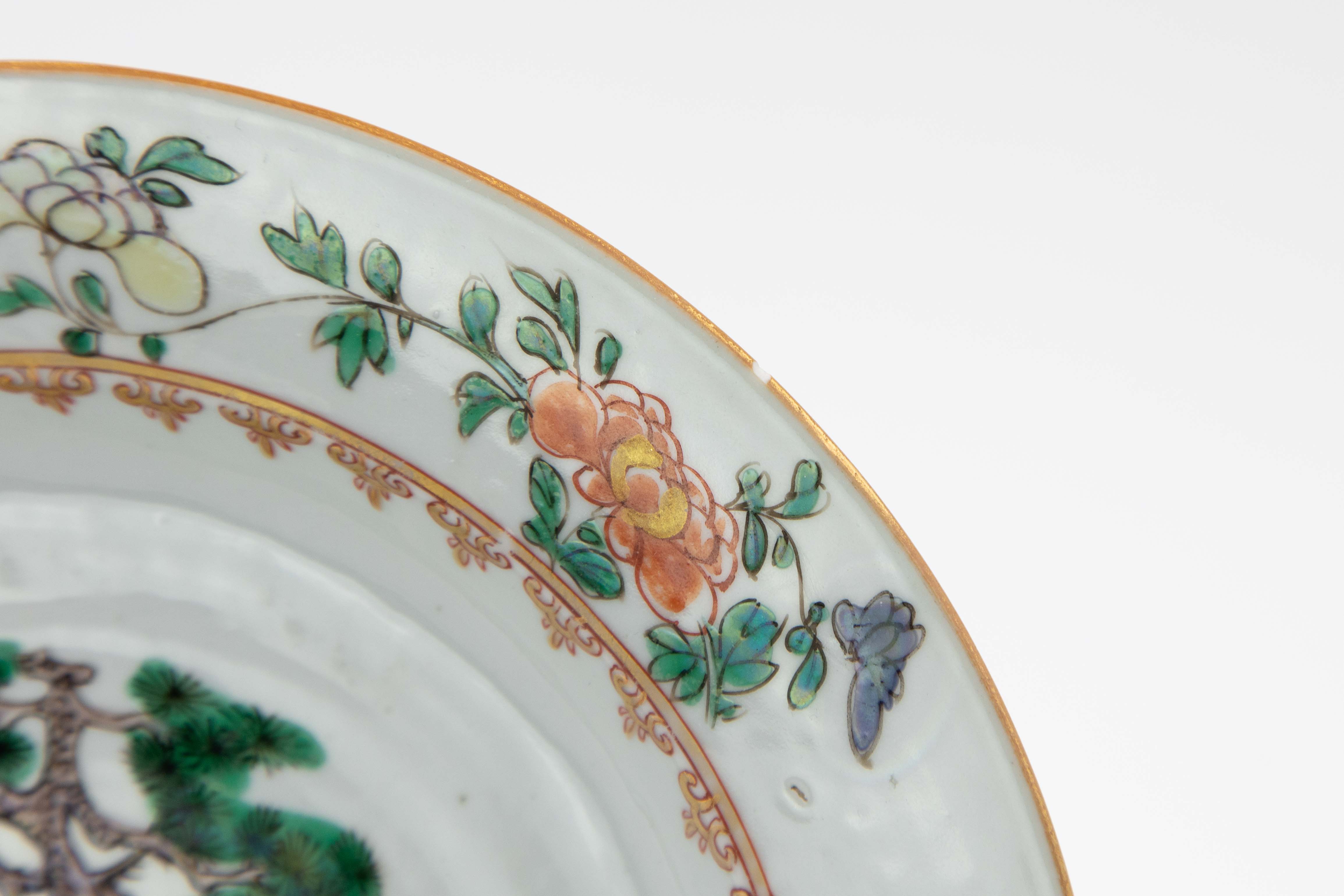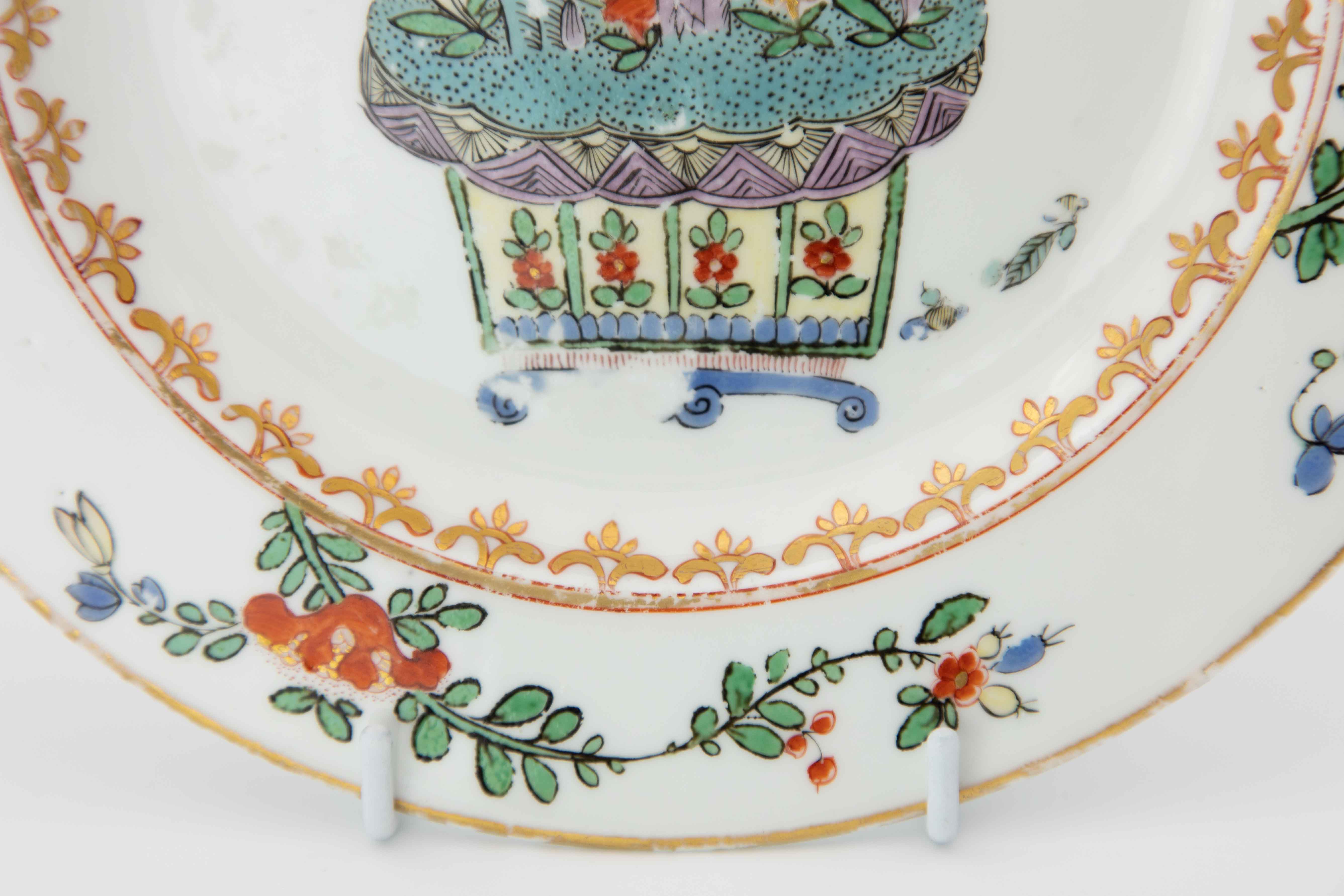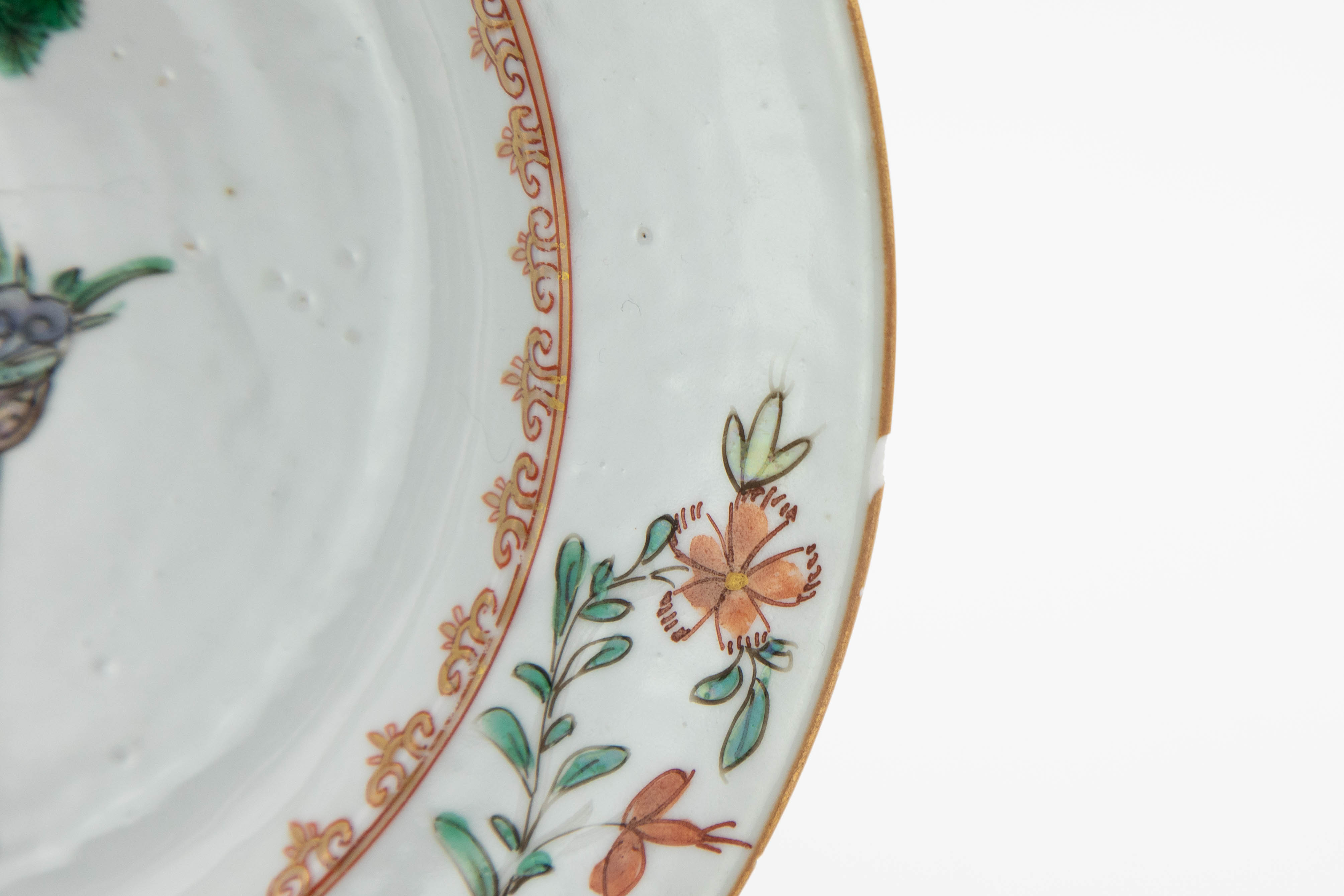Chinese porcelain has always been the standard which European ceramicists revered and tried to emulate. This pair of plates demonstrates a clear desire by Meissen craftsmen to achieve the exquisite beauty of Kangxi-period famille verte porcelain. Though Chinese porcelain was historically considered to be the best, Meissen porcelain soon became respected in its own right as the European answer to hard-paste. Indeed, the lingzhi fungus depicted on these plates alludes to the impact of both Chinese and Meissen porcelain. As symbols of eternity and immortality in Chinese culture, the lingzhi speaks of the lasting influence that these two porcelain centers have had in the history of ceramics.
Chinese porcelain has always been the standard which European ceramicists revered and tried to emulate. This pair of plates demonstrates a clear desire by Meissen craftsmen to achieve the exquisite beauty of Kangxi-period famille verte porcelain. Though Chinese porcelain was historically considered to be the best, Meissen porcelain soon became respected in its own right as the European answer to hard-paste. Indeed, the lingzhi fungus depicted on these plates alludes to the impact of both Chinese and Meissen porcelain. As symbols of eternity and immortality in Chinese culture, the lingzhi speaks of the lasting influence that these two porcelain centers have had in the history of ceramics.
An essay for this object is forthcoming. Sign up for our email list to be the first to know when this essay is published!
Thank you!
You have successfully joined our subscriber list.
Condition
Chinese (left): Very good. Three minor rim chips, the largest measuring 0.2 cm. Scattered, minor firing imperfections throughout.
Meissen (right): Good. Light gilding wear, mainly to rim. Wear to enamels, notably on the foot of the jardiniere.
For a detailed condition report, please contact us.
Marks
Chinese: none
Meissen: crossed swords mark in underglaze blue, impressed numeral 20
Provenance
Sotheby’s
Collection of Henry H. Arnhold
Angela Gräfin von Wallwitz, Munich
Literature
Maureen Cassidy-Geiger, The Arnhold Collection of Meissen Porcelain, 1710-50, New York 2008, no. 248, pp. 522-523, illus.
Exhibitions
Porcelain, No Simple Matter: Arlene Shechet and the Arnhold Collection. The Frick Collection, 24 May 2016-2 April 2017.
Chinese (left): Very good. Three minor rim chips, the largest measuring 0.2 cm. Scattered, minor firing imperfections throughout.
Meissen (right): Good. Light gilding wear, mainly to rim. Wear to enamels, notably on the foot of the jardiniere.
For a detailed condition report, please contact us.
Chinese: none
Meissen: crossed swords mark in underglaze blue, impressed numeral 20
Sotheby’s
Collection of Henry H. Arnhold
Angela Gräfin von Wallwitz, Munich
Maureen Cassidy-Geiger, The Arnhold Collection of Meissen Porcelain, 1710-50, New York 2008, no. 248, pp. 522-523, illus.
Porcelain, No Simple Matter: Arlene Shechet and the Arnhold Collection. The Frick Collection, 24 May 2016-2 April 2017.
This item ships free to the continental US, and globally for a flat-rate fee of $100.
All objects are packed with utmost care by our team of expert fine art shippers. All items are shipped with parcel insurance.
For more information on our shipping policies, please visit our FAQ Page.
An essay for this object is forthcoming. Sign up for our email list to be the first to know when this essay is published!
Thank you!
You have successfully joined our subscriber list.










